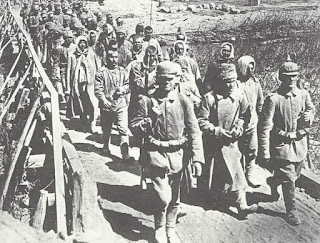Russia's ill-fated Lake Naroch Offensive took place 107 years ago this week, beginning on 18 March 1916 (5 March O.S.)–World history and facts
Russia's ill-fated Lake Naroch Offensive took place 107 years ago this week, beginning on 18 March 1916 (5 March O.S.).
Although the Germans had detected the Russian preparations, they were initially surprised by the most intense Russian artillery bombardment of the war to that date.
However, the effects of this were minimized by poor intelligence (the Germans had air superiority), lack of coordination, and the fact that the majority of Russian shells (mostly low to medium caliber) either failed to penetrate the frozen ground or exploded harmlessly in the Belorussian marshes.
When the densely packed waves of Russian infantry moved forward expecting to occupy destroyed German forward positions, they were instead cut to pieces by artillery and machine gun fire.
Despite being repulsed with over 15,000 casualties on the first day, the Russian Second Army (reconstituted after having being all but destroyed at the Battle of Tannenberg in 1914) as well as the neighboring First and Fifth Armies persisted in costly human wave assaults against the German positions until the offensive was called off on 30 March (17 March O.S.).
Despite having a 2:1 advantage in the sector, the Russians only succeeded in gaining 2-3 kilometers and inflicting 20,000 German casualties at the appalling cost of an estimated 80,000 to 100,000 of their own.
The Germans counted 5,000 corpses of Russian soldiers which they removed from the mostly-intact barbed wire defenses in front of their trenches (the wire ought to have been removed by artillery and sappers prior to a major assault).
Not only did the offensive fail to recapture any of the territory lost to the Germans in 1915, but did not achieve its primary objective of convincing the German Army to redeploy any of the forces it had committed to its effort to crush the French at the Battle of Verdun.
The map on the left shows the designated objectives for the Lake Naroch Offensive while that on the right shows how little the front had moved by its end.
This was the last major Russian offensive against the Germans during World War I, as both the 1916 Brusilov Offensive and the 1917 Kerensky Offensive targeted the Austro-Hungarian forces in what is now western Ukraine.


.jpg)

.jpeg)






Comments
Post a Comment